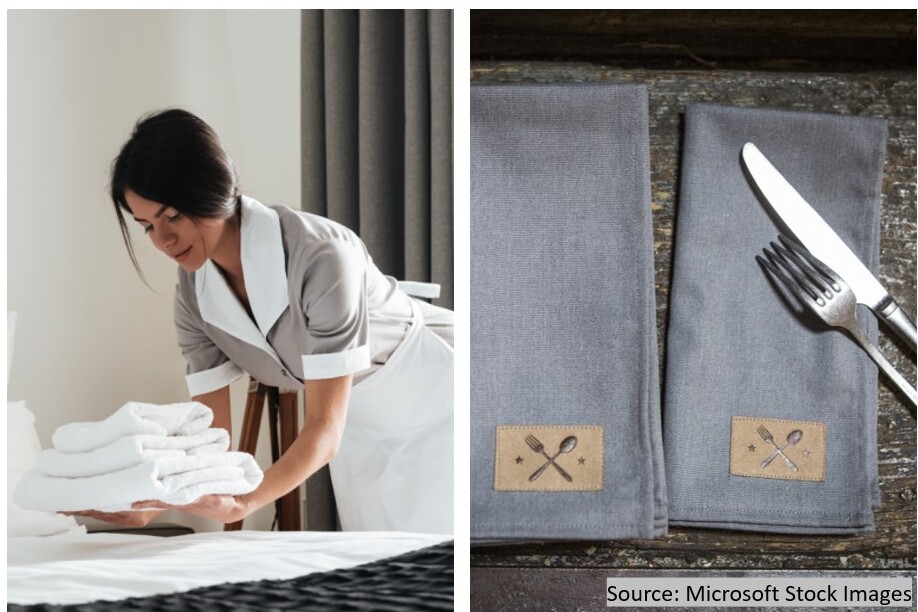
Textiles are among the intensively used materials in the HoReCa sector. According to statistics, on average in hotels there are 14 kg of textiles per bed (including bed linen, towels, uniforms, kitchen textiles). Hotels often renew or repurchase textiles, which is about 3.5 kg of new textiles per bed per year. Considering that the production of one kilogram of textiles has a carbon footprint of 25 kg of CO2 and uses 4,000–5,000 liters of water, one can imagine the total environmental damage caused by the consumption of textiles.
Circular approaches in the use of textiles in the economy of a hotel or restaurant will reduce the ecological footprint and save money. By circular approaches we mean:
1) keeping textiles in working condition for as long as possible through the use of high-quality and durable material, practical design / cut, proper handling of products, high-quality repairs, recycling on the farm;
2) ensuring that end-of-life textiles and the materials they contain are ultimately given a further life through recycling and recycling.
The life span of a material is affected not only by its durability. Some hotels use gray rather than white linens to reduce the risk of stains and prolong the life of the product.
For end-of-life textiles, the following solutions can be applied:
• Processing bed linen and other textiles containing at least 50% cotton into industrial wipes.
• Direct donation of bed linen and towels for reuse in shelters/hospitals/hospices.
• Recycling guest towels into cleaning or kitchen towels.
• Recycling of tablecloths into a kitchen form.